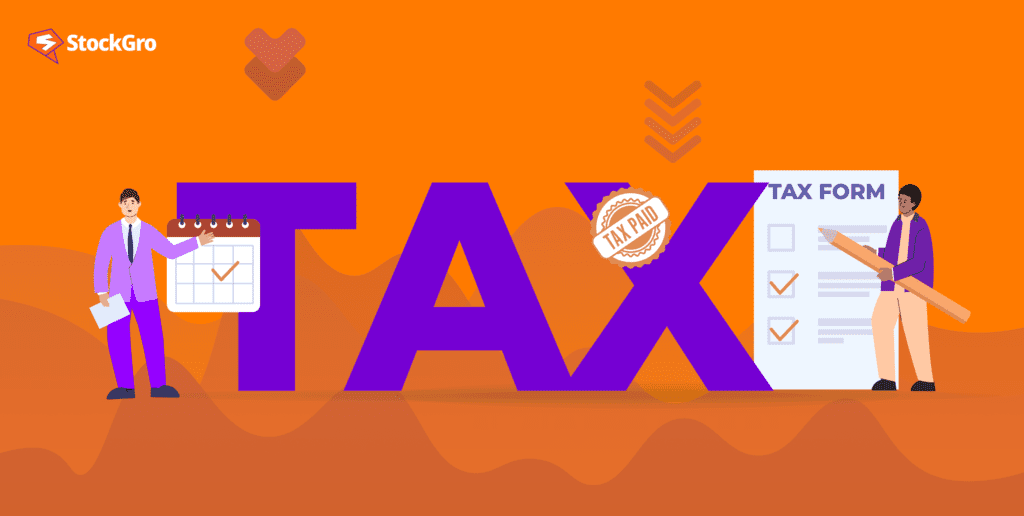
Here’s an interesting fact – the top 10 percent own approx. 72 percent wealth in India. Staggering, isn’t it, this income disparity? So, how do you solve this situation? By “taxing the rich ” through the capital gains tax.
It’s time to dwell on this tax and why the current government plans a revamp.
Capital gains tax overview
Put simply, capital gains is when you sell a property or any asset you’ve had for a particular period of time.
Generally, the term ‘capital asset’ includes a variety of investments like stocks, real estate, bonds, etc. The profit you earn from selling these assets is called ‘capital gains.’
The basic understanding goes that the gains you earn are taxable under income tax laws. Thus, when you sell a capital asset, the income earned is taxable during that financial year.
Also read: Old vs. New – Which Tax Regime is Better For FY 2023-24?
Calculating capital gains tax
The question is – how do you calculate capital gains tax in India? For this, you need to differentiate between long-term and short-term assets.
Short-term vs long-term capital gains tax
In India, capital assets held for less than 36 months (3 years) fall under short-term capital assets (STCA). But here’s an exception:
From the financial year 2017-18, it was decided that “immovable” assets held for less than 2 years would be treated as STCA. Immovable means a home, a building, or a piece of land. But but…the date of sale should have been after March 31, 2017.
Now here’s another exception. Some assets are considered short term capital assets if they are held for 1 year or less. These can include –
- Equity or shares of a listed company
- Bonds, government securities, or debentures bought on a recognized stock exchange
- Investment in Unit Trust of India (UTI)
- Mutual funds which only invest in equity stocks
- Zero coupon bonds (i.e. zero-interest paying bonds which are bought at a discount and sold at the higher face value)
The second type, held for a longer period, is called long-term capital assets (LTCA). Let’s simply this:
- Capital assets held longer than 36 months (or 3 years )
- Immovable assets held for more than 2 years
- Certain specific investment-based assets held for more than 1 year
How is capital gains tax calculated?
Are you wondering why we are differentiating between LTCA and STCA? The reason is simple – both categories are taxed differently in India. It’s tricky, but once you get the math, you can easily calculate the taxes levied.
To begin with, how much you’ll have to pay will depend on two aspects –
- Type of asset held
- Your income slab
| Types of Tax | Condition | Tax Rate Applicable |
| STCG | Securities transaction tax (STT) applicable | 15% + surcharge and cess as applicable |
| STCG | STT not applicable | Added to income tax return and tax % would be based on income slab |
| LTCG | Except when selling equity shares/equity-oriented fund units | 20% |
| LTCG | When selling equity shares/equity-oriented fund units | 10% over and above Rs.1 lakh |
Now, time to dive into some 10th-grade math (nostalgia alert…) –
For example, you purchased a flat worth Rs.15 lakh in 2010. In 2023, you decided to sell it off for Rs.40 lakh. Plus, no improvement expenses.
Step 1: Calculate or determine the full value of money that you received after selling the capital asset.
As per the example, you earned Rs.40 lakh as the total value.
Step 2: Subtract three expenses from this value:
- Indexed cost of acquisition = (cost of acquisition) x indexation factor
- Indexed cost of transfer = brokerage, advertising costs, etc
- Indexed cost of improvement = (cost of improvement) x indexation factor (different if improvement done a year later than acquiring property)
Now all these terms seem foreign or confusing. Don’t worry; they’re simple.
First, we start by calculating indexed cost of acquisition
Indexation factor = (Cost inflation index in sale year)/(Cost inflation index in buy year)
= 348/167
= 2.08
Thus, indexed cost of acquisition = 2.08 x 15,00,000
= Rs.31,20,000
Let's assume indexed cost of transfer, advertising, brokerage = Rs.40,000
Thus, from step 2, the value reduces = 40,00,000 - 31,20,000 - 40,000
= Rs.8,40,000
Step 3: Check and multiply the current tax rate with net capital gains
Net profit or gains = Rs.8,40,000 Being a long term capital asset, tax to be paid is 20% of Rs.8,40,000 = 20 x 840000/100 = Rs.1,68,000. Note: In this example, you have not claimed any deductions falling under Section 54 of the Income Tax Act.
Here’s another question – what if you sell a short-term capital asset? How will the tax be calculated?
It’s straightforward – whatever gains you receive would be added to your total income. And then the usual process of income taxes would follow.
You may be interested: How did actor Suniel Shetty become a business tycoon?
Don’t forget STT a.k.a Securities Transaction Tax
As an active trader or investor, STT is not a foreign concept. Still, let’s get some clarity on this tax.
Put simply, it is a tax charged to investors or traders while buying/selling shares. Basically, when you trade shares in NSE or BSE, you will be charged STT.
Now, why is it relevant in terms of capital gains?
The reason is that transactions on stock exchanges or securities come under STCG because of their short term.
Thus, based on whether STT is applicable or not, the following are the rates on capital gains:
| Type of Order | STT Levied |
| Intraday | 0.025 percent on sell side |
| Delivery | 0.1 percent on buy and sell side |
| Options | 0.125 percent of intrinsic value of options bought and exercised 0.625 percent of premium of options shorted |
| Futures | 0.0125 percent on sell side |
Read Also: Amul vs Nandini: The battle of India’s dairy giants
Is the government mulling higher capital gains tax?
Why are you reading about capital gains? A. Because it’s relevant, and B. The government may hike the capital gains tax.
The government “reportedly” feels that capital gains tax requires a revamp. Here are some possible reasons or theories:
Reason 1: Did you know India levies the highest tax rate of 30 percent on income earners? And yet, taxes earned on equity funds or stocks is alarmingly low.
The top 10 percent rich seem to be huge on investments. By that logic, the government should receive higher taxes on these “investments”. But…that’s not the case.
Reason 2: India, apparently, relies more on indirect taxes than direct ones. This may be the reason why the poor are neglected, even as India saw 70 new millionaires between 2018 and 2022…EVERY SINGLE DAY.
Thus, the government might hike capital gains tax to increase the contribution of direct taxes.
Both reasons, however, boil down to one core goal – decreasing income gap. But changing capital gains tax is a herculean tax. And many governments have tried to do that in the past.
With the 2024 assembly elections kicking in, will we witness the top 10 percent paying higher taxes. Or not? It remains a 50-50 possibility.

